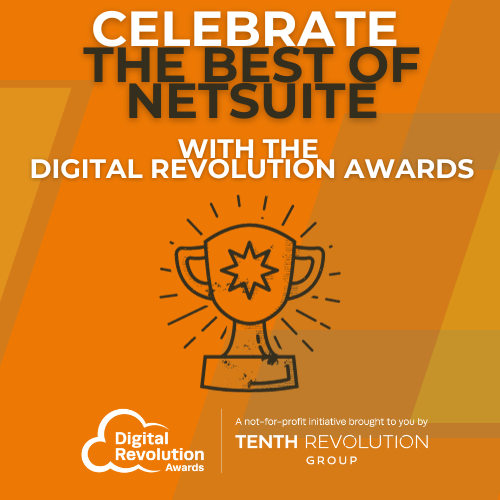How to retain NetSuite staff during The Great Resignation

While the pandemic made us rethink the methods in which we all work, it has also given professionals the time to evaluate what they want from their employer and if these needs are currently being met. And with this came the Great Resignation, which saw millions upping and leaving their current jobs in search of something that met their demands more. With a turnover rate of 13.2% recorded for the tech sector, businesses have had to adapt quickly to meet new industry standards to keep what talent they have.
Want to know what NetSuite professionals value?
Download our latest Careers and Hiring Guide for an expansive report on all things NetSuite
The fastest way to remedy this? Find new ways to not only attract but retain top talent by making your business stand out against your competitors.
In this post, we’ll share our top tips for retaining your NetSuite staff and minimizing future attrition rates.
Nurture your talent
Showing that you value your employees is crucial to retaining them and can save you a lot of time, money, and effort down the line. As an employer, you need to prioritize maximizing the potential of the talent you currently have and providing new and exciting opportunities to grow and develop is a great way to keep your current workforce progressing towards both their own personal goals, as well as your company’s.
Tech professionals’ desire for upskilling and professional development is larger than ever before. Our latest Anderson Frank Careers and Hiring Guide: NetSuite Edition 2021-22 showed that 25% of NetSuite professionals surveyed gained certifications during the pandemic, using their time in lockdown or on furlough to upskill and advance their professional development, with many still continuing to undertake certifications to further their knowledge.
In fact, according to our survey, 74% of professionals want the chance to expand their skills, knowledge, and experience with NetSuite. So, consider allocating funding to allow employees to take part in additional training and gain certifications. This not only shows your workforce that you are interested in their development but also brings practical knowledge into your organization.
If anything is clear, it’s that professionals want lifelong learning and progression opportunities—and they want an employer that not only values this, but also supports it. With the growth potential, not only on an individual skill level but also in terms of wider collective results, providing continuous ways to develop your team’s knowledge is beneficial to everyone—your employees feel valued, and your customers feel confident in the advice they receive.
Prioritize connection
As an employer, you’ll naturally focus on the growth of your company but don’t forget that your people are your most important and valuable asset. As important as results are to any business, building trusting and long-lasting relationships with your employees is as much an indicator of a successful business.
46% of respondents in our Careers and Hiring Guide survey responded that the working environment/company culture would motivate them to consider a new role. And one fool-proof way of protecting yourself against this, is to invest in the people who make your company a success to build a positive and encouraging work environment, which in turn will lower your attrition rates. This could look like investing in good training, improving your onboarding process, and effectively communicating your company mission and values. No matter how you choose to build your company culture, remember that employees that feel a part of your company’s journey are more productive and less likely to look for a role elsewhere.
Building and nurturing connections with (and among) your workforce is just as important. After the past few years, where work is split between the kitchen table and the company office, social connections can sometimes take a hit. But ensuring that there is enough contact between team members during the week can significantly improve your overall employee experience.
It can be as simple as arranging weekly team calls to socialize and share achievements or encouraging friendly internal competitions to strengthen the bond between your team; it isn’t what you do that’s important, if it encourages healthy communication and camaraderie.
To maximize the potential of your workforce, you need to create a safe and inclusive community where people feel like they belong, no matter what their working arrangement may be. Making these activities accessible to those working in the office and those who work remotely is something to remember. One of the main motivators for employee dissatisfaction is feeling disconnected, so making everyone’s experience equal is vital.
Flexibility
The future of work for many businesses hangs on how they embrace flexibility. While remote working was introduced to help businesses survive throughout the pandemic, it’s clear that what was supposed to be a quick and temporary resolution is a long-term desire for many.
25% of professionals questioned would change jobs to pursue a better work-life balance.
Professionals are seeking flexibility like never before, and employers need to rise to that demand to retain their staff. This means not only facilitating remote or hybrid work and ensuring equity for remote workers but also shifting what policies you have in place to allow employees to better manage their work-life balance. Retaining staff doesn’t have to be enforcing new practices, it can be as easy as adapting what you already have.
Flexible work hours are a great way to show that you value a healthy work-life balance for your employees. In fact, 32% of employees believe that flexible work hours is the most important perk they could be offered, according to our 2021/22 Careers and Hiring Guide. If you want to keep what staff you have and have a healthy environment ready to integrate new talent, it’s important to think of ways to show employees you value their time both inside and outside working hours.
It’s clear that employee experience and wellbeing are the main places where employers need to channel their focus to retain their top talent, but ultimately, investing time and resources to improving your employee experience is a move that stands to benefit everyone. The Great Resignation is, and will continue to be, a challenge for businesses in 2022, so it’s time to act now.




